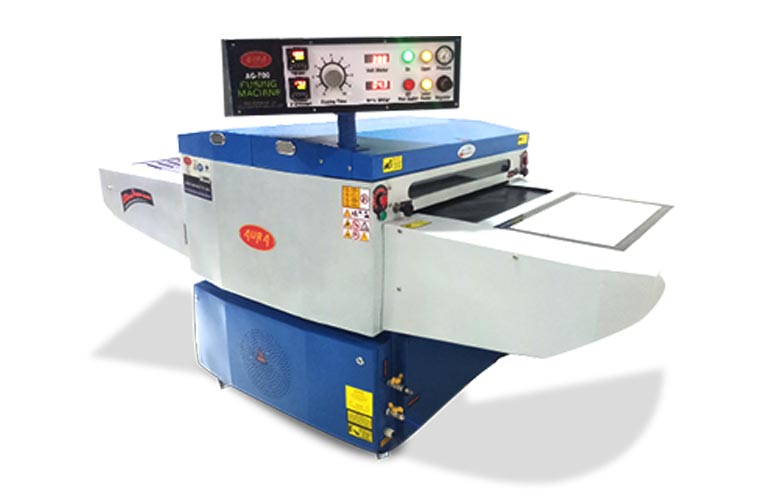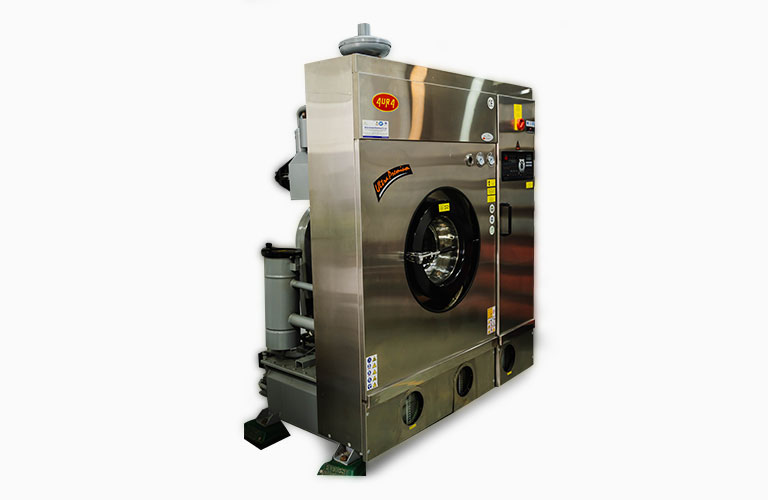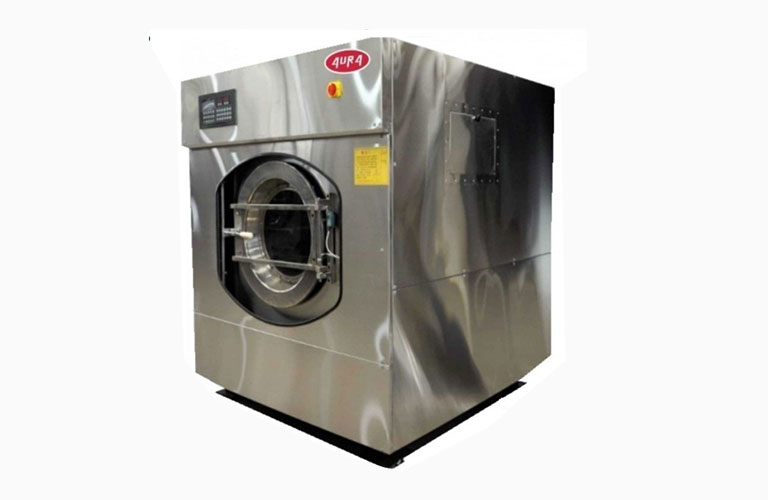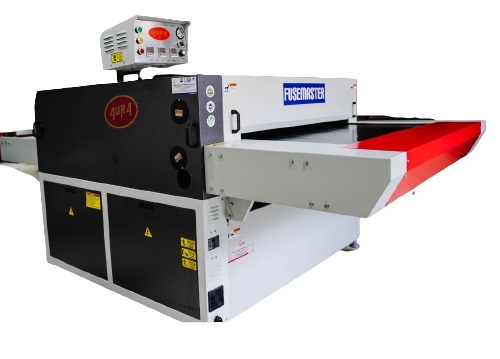
The Right Temperature, Pressure, And Processing Time Define the Right Fusing Press
Fusing machines have witnessed massive transformation and development in their specifications, especially pressure, temperature, and processing. Fusing technology has taken giant strides over the last six decades ever since the polymer resin-coated interlinings were introduced in the garment industry. While the fusing process uses pressure and heat to fix the fusing interlinings with the outer fabric, it is the entire operation that proposes superior results.
With original parameters of pressure, temperature, and processing time staying consistent, there has been considerable development in material science and mechatronics. Even though the new technology of soft microdot non-woven interlining is overshadowed by the stiffer resin-coated woven, electric irons as the basic technology still remains prevalent for fusing interlinings to the shell fabric.
The three parameters — temperature, pressure, and processing time — are the primary design criteria for any fusing press. In a typical flatbed press, the upper plate is electrically heated and unpadded, whereas the bottom plate is unheated and padded with a flexible cover of hair, felt, or silicone.
Top and nethermost bucks can be covered with a PTFE (Poly Tetra Fluoro Ethylene) cover to help staining, tenacious figure–up, adhesion of garment corridor to the buck, and help in maintaining a clean face. Heat is handled by an electric heater element bedded in the pressure plate. The heating element must be similar so that an accurate and invariant distribution of the temperature is attained over the plate face.
The flatbed press is a batch process, and loading and unloading of accouterments consumes a lot of time in comparison to processing time, making the process veritably less productive. Well, to ameliorate productivity, manufacturers frequently use a charger or frame to personalize the loading/ unloading process, therefore, perfecting productivity to a certain extent.
Other disadvantages of flatbed fusing press are heat loss to the atmosphere, contemporaneous operation of heat and pressure, and low-pressure range. The only advantage of flatbed fusing press is that the material remains stationary throughout the process and hence gives deformation-free results for dimensionally unstable fabrics.
However, to filter the pressure application from heat application and mend the heat loss issue, a continuous fusing press was developed. There are two sorts of continuous fusing press: return feed conveyor system (also called drum continuous) and end-to-end conveyor system (also called flat continuous). Reciprocally feed conveyor system, one conveyor belt is wrapped partially around a drum surface where the drum is positively driven; the fusible composite is transported while being sandwiched between the drum surface and conveyor. The drum surface is heated through heating elements inside the drum.
The fusible composite gets heated while being carried along the drum surface, and therefore, the pressure is applied at the top while the composite is close to exiting the drum surface. The cylinder consists of two parts: the inner cylinder, a stationary assembly during which the components are mounted, and therefore the outer cylinder, which rotates around the inner cylinder. This principle ensures that the warmth generated by the inner core is evenly distributed everywhere in the cylinder mantle. Since approximately half the cylinder-mantle area is within the actual heating zone at any given moment, the remaining area regains the warmth lost through transference.
Temperature
As the adhesives have a narrow melting range, temperature control was a perennial problem in old fusing presses thanks to the inaccuracy of ordinary bi-metal thermostats, as they resulted in a wider range of temperature variation, which led to retaliate and strikethrough infused components. The use of Proportional Integral Derivative (PID) controlled thermostats improved the scenario as these devices not only measure temperature at the source but also memorize the heat-loss cycle within the fusing press environment.
These thermostats detect the drop by the press temperature at the precise millisecond level, and immediately, electricity is supplied to the warmers to take care of the set temperature. The warmers still are powered until a stable temperature environment is re-established then the electricity is terminated.
These advanced systems not only ensure temperature accuracy within the order of 0.5% of varied machine settings but also offer the added advantage of minimal power consumption. It's also essential that modern fusing presses be efficiently insulated to take care of a continuing heating environment within the press. If insulation is poor and/or there's heat loss, then the warmers would be during a constant state of operation, and therefore, the power consumption is going to be high. It also makes the working environment uncomfortable and reduces productivity.
Pressure
The action of applying pressure within the fusing process is sensitive and precise as an excessive amount of pressure will induce the evil strike-back or strikethrough, and insufficient pressure will limit the penetration of the adhesive into the outer fabric. Pressure should be applied only after the adhesive has reached glue line temperature and will be uniform throughout.
The very reason that heat and pressure are applied together in an iron or flatbed fusing machine is going to be the flattening of adhesive dots leading to stiffening of fused components and inferior peel bond strength. Just in case of continuous fusing press, there are rollers that apply pressure on the composite. Because the width of fusing presses increases length, diameter and weight of the pressure roller also increase, leading to unequal pressure and inconsistent bond strengths. Computer-aided profiling of roller has been completed lately to realize better accuracy. The pressure application is often mechanical, pneumatic, or hydraulic.
By this technique, the glue dot isn't squeezed and doesn't lose its dimension for an optimal fusing operation. The glue dot isn't enlarged and remains small and compact. As a result, there's an honest bonding and no strike through or retaliate. This technique is often adapted for a good range of various combinations of interlining and fabrics. As both the pressure systems are independent of one another, they will be used individually or together so as to use double pressure.
Processing Time
Processing Time is that the time that composite spends inside the machine. Just in the case of a flatbed fusing press, it's either an analog or digital timer, and for continuous fusing, it depends on the speed at which the belt moves through the conveyor press. Another important development is the inverter motor, which is now a typical component in the latest fusing presses. It safeguards the press from unreliable and fluctuating power supplies and permits the equipment to figure under the foremost stressful conditions. Most significantly, it ensures that the warmers are receiving the right wattage of power.
The conveyor belts tend to shift laterally (called tracking) in most continuous machines. Earlier models employed a spread of straightforward devices to stop the belts from moving offline. The foremost popular mechanisms were pneumatic arrangements that kept the belt during a constant state of movement.
Read More



 7 Fabric Defects to look out for a while performing Fabric Inspection
The one thing that drives all your efforts as a garment importer is to anticipate the satisfaction of your customers when they buy a garment from your product line. And this stays on your mind whenever you tour your supplier’s factory. But when you do not find the quality of the fabric up to your standards, instead identify various loopholes, it gets you thinking on the extent of fabric wastage..
7 Fabric Defects to look out for a while performing Fabric Inspection
The one thing that drives all your efforts as a garment importer is to anticipate the satisfaction of your customers when they buy a garment from your product line. And this stays on your mind whenever you tour your supplier’s factory. But when you do not find the quality of the fabric up to your standards, instead identify various loopholes, it gets you thinking on the extent of fabric wastage..
 How are Steam Boilers used in breweries?
Purchasing a boiler is the most vital investment that a craft brewery makes. Choosing the appropriate one either a steam or diesel fired boiler, is crucial to making sure that your brewery is meeting production demands while keeping high quality without wasting energy and time n many ways, a steam boiler is the basis for the brewery success and even the best In many ways, a steam boiler is the basis for the brewery success and even the best breweries in the world wouldn’t be able to...
How are Steam Boilers used in breweries?
Purchasing a boiler is the most vital investment that a craft brewery makes. Choosing the appropriate one either a steam or diesel fired boiler, is crucial to making sure that your brewery is meeting production demands while keeping high quality without wasting energy and time n many ways, a steam boiler is the basis for the brewery success and even the best In many ways, a steam boiler is the basis for the brewery success and even the best breweries in the world wouldn’t be able to...
 The Right Temperature, Pressure, And Processing Time Define the Right Fusing Press
Purchasing a boiler is the most vital investment that a craft brewery makes. Choosing the appropriate one either a steam or diesel fired boiler, is crucial to making sure that your brewery is meeting production demands while keeping high quality without wasting energy and time n many ways, a steam boiler is the basis for the brewery success and even the best In many ways, a steam boiler is the basis for the brewery success and even the best breweries in the world wouldn’t be able to...
The Right Temperature, Pressure, And Processing Time Define the Right Fusing Press
Purchasing a boiler is the most vital investment that a craft brewery makes. Choosing the appropriate one either a steam or diesel fired boiler, is crucial to making sure that your brewery is meeting production demands while keeping high quality without wasting energy and time n many ways, a steam boiler is the basis for the brewery success and even the best In many ways, a steam boiler is the basis for the brewery success and even the best breweries in the world wouldn’t be able to...
 A Guide to Industrial Washing Machine Needs!
Long gone are the days when hand washing clothes in river or pond water was the only resort people had. With the technology uprising, we have fabric-specific and industry-specific washing machines to make our lives easier and cater to distinct needs. However, there are a few things that still cannot be cleaned at your home, no matter how excellent or high-quality a washing machine you have.
This is especially true for those delicate clothes, expensive shoes, or the classy carpet..
A Guide to Industrial Washing Machine Needs!
Long gone are the days when hand washing clothes in river or pond water was the only resort people had. With the technology uprising, we have fabric-specific and industry-specific washing machines to make our lives easier and cater to distinct needs. However, there are a few things that still cannot be cleaned at your home, no matter how excellent or high-quality a washing machine you have.
This is especially true for those delicate clothes, expensive shoes, or the classy carpet..
 Eliminate Garment Odour and Sanitise it with Laundry Machines
It is never a pleasant experience to wear clothes that are fresh from the dryer but still exude a strong odour. Moreover, the current Pandemic has taken us down the road of hygiene diligently, and now a customer does not just expect clean clothes that are odour free but also sanitised.
And why not? Sanitisation is an essential requirement that keeps us protected against germs..
Eliminate Garment Odour and Sanitise it with Laundry Machines
It is never a pleasant experience to wear clothes that are fresh from the dryer but still exude a strong odour. Moreover, the current Pandemic has taken us down the road of hygiene diligently, and now a customer does not just expect clean clothes that are odour free but also sanitised.
And why not? Sanitisation is an essential requirement that keeps us protected against germs..
 What is a Fusing Machine?
Fusing Machines are used in the garment industry to fuse a material capable of being fused to a base fabric through the process of pressure, heat, and time. The fused material should have acceptable strength, the ability to stand continuous wash, or any fabric treatment.
This extremely vital process that defines and maintains the quality of the garment involves holding the fabric and interlinking the conveyor belt while heating..
What is a Fusing Machine?
Fusing Machines are used in the garment industry to fuse a material capable of being fused to a base fabric through the process of pressure, heat, and time. The fused material should have acceptable strength, the ability to stand continuous wash, or any fabric treatment.
This extremely vital process that defines and maintains the quality of the garment involves holding the fabric and interlinking the conveyor belt while heating..